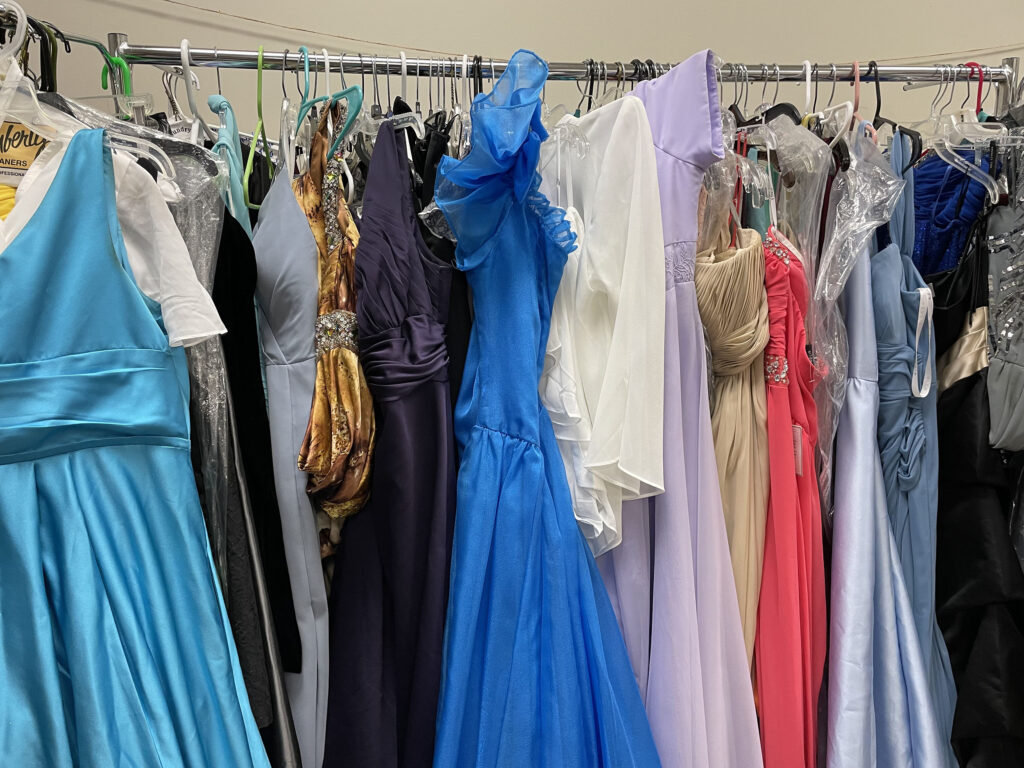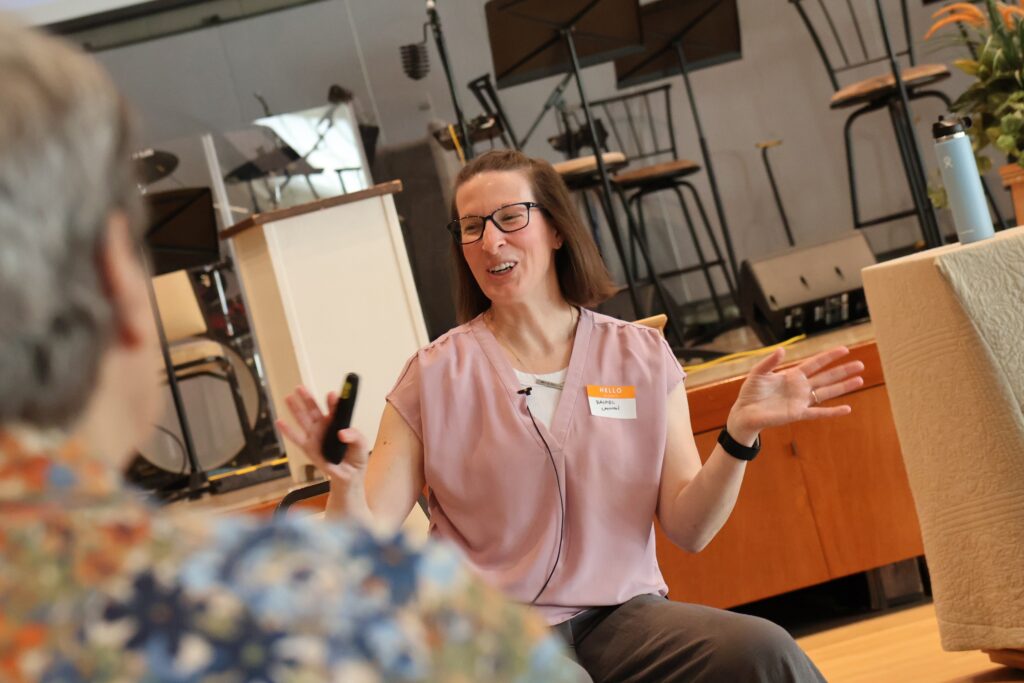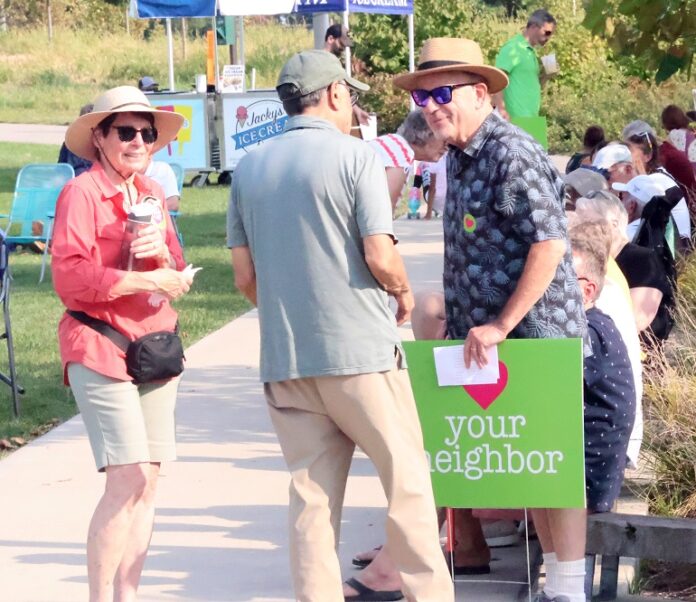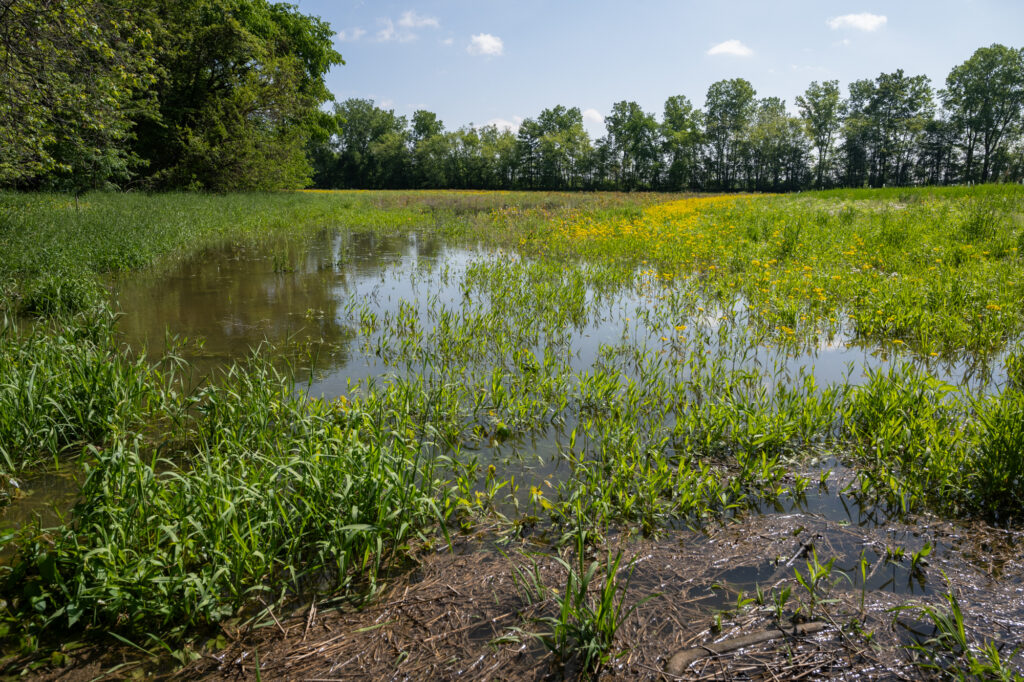TPS dress, suit resale


Start High School hosts former attire dress sale for homecoming, prom seasons
TOLEDO – A bright orange, long dress with a sari-style top is among the hundreds of dresses senior Raniyah Rogers and her classmates at Start High School have prepped ahead of a formal attire resale.


The My Sister’s Closet dress resale officially takes place twice a year, just ahead of the high school homecoming and prom seasons. It is hosted by Start Fashion Marketing – DECA II Club as a fundraiser for club projects and trips, such as attending a sewing and quilt expo later this fall at Suburban Collection Showplace in Novi, Mich.
The fashion marketing students and their teacher, Robinetta West, gave a show and tell ahead of the sale on Wednesday to news media.


Sorting and other preparations had been taking place for days, Raniyah said, although the students got somewhat of a head start in the spring.
“We get to organize the dresses, try them on,” senior Samantha Zadrazil said about the preparation time.
While Start’s fall sale is early this year, so are some of the dances. Start High School, for example, will host its homecoming on Sept. 28 with the theme of Bollywood.
In the meantime, West said the resale will expand this year into a year-round opportunity, with pictures of formal attire to be posted on the school’s website that can be purchased between the in-person sales.
“We’re always looking for donations,” West said. Gently-used formal attire, such as dresses, shoes, suits and ties are accepted in all styles, sizes and lengths.
Memorable pieces donated this year include bright yellow stiletto heels and a gown that was clearly a wedding dress. Start senior Kristian Woods-Boykin said someone even donated a pair of Kade Spade brand shoes.
Raniyah said “old is the new” among today’s high school girls who like fashions from the ’80s and ’90s; and Kristian gave a mention to Regency-era styles inspired by the show Bridgerton.


However, high school boys tend to favor modern and trendy formal attire. With that in mind, the DECA students tried different combinations of a shirt, tie, vest and jacket on a display mannequin as they considered how to present such a look.
“Always take a risk,” Kristian noted about the options.
By the way, the mannequins were donated as well.
The intent of the resale, in addition to practical experience for students who are considering retail or fashion careers, is to provide area high schoolers with affordable, special occasion attire.
It’s not just students from Toledo Public Schools who benefit. Over the years, shoppers have come from Whitmer High School in Washington Local School District; St. Ursula Academy and Central Catholic High School in Toledo; and State Line Christian School in Temperance, Mich. Shoppers also come from Defiance, Findlay and even Akron.
Sale date and time
The My Sister’s Closet sale takes place from 10 a.m. to 4 p.m. on Saturday and Sunday, Sept. 7-8 in the main lobby of Start High School located at 2010 Tremainsville Road in Toledo.
Dresses sell for $25 each, with varying prices on other attire. Cash only.




‘Belonging’ vs. ‘Othering’


Program gives residents tools to bridge divides in community
SYLVANIA – How do you interact with people who don’t think the same way you do?
In a deeply polarized society, there is a growing tendency to avoid hard conversations, to categorize others by their politics or other group affiliations, to “unfriend” or “snooze” the people with whom we disagree.
Mike Linehan saw it at his family reunion over the summer. “We all huddle in our own safe little camps of thought. We exchange pleasantries in the beginning and the end of the reunion, and nothing happens in between,” said Linehan.
Linehan and about a dozen others attended a workshop Aug. 24 in Sylvania to learn about Bridging to Belonging, a program to empower communities to create spaces where every person belongs and contributes together.
The MultiFaith Council of Northwest Ohio hosted the event at Olivet Lutheran Church to introduce the program that was originally developed for the InterFaith Leadership Council of Metropolitan Detroit.
Donna Mens, a member of the MFC and Olivet Lutheran Church who attended the workshop, expressed interest in gaining the tools to effectively listen to people who have different opinions.
“I feel the polarization, especially politically right now, and it is so emotionally charged,” said Mens. “So how do we bridge that? How do we listen to each other, and what people’s thoughts and values are without that defensiveness and that emotion?”
Rachel Cannon, a psychologist specializing in organizational development and behavior and co-creator of Bridging to Belonging, spoke on the science of belonging. She explained how the program helps participants learn to build genuine connections with people from groups outside their comfort zone.


The opposite of belonging is “othering,” Cannon said. This emphasizes the differences between groups of people and can often lead to extreme forms of hate. Whether looking at race, faith, age, socio-economic status or another characteristic, “othering begins simply when you flatten someone’s identity and only see one aspect of who they are,” said Cannon.


According to Cannon, humans naturally do this as a way of trying to explain the world around them. “We see one thing that happens, and we try to fill-in the rest of the story,” she explained. “The challenge for us is, can I stop my natural tendency and can I become more curious?”
Cannon cited research from the nonprofit More in Common that revealed Americans often have a distorted understanding of what people on the other side of the political aisle really think. “Our sense of division, our sense of polarization, is really truly about perception,” she said. “The gap between where, say, Democrats are, and where Republicans think they are, is very big … and vice versa.”
This perceived polarization “leads us to viewing others as a problem, because we think we know the story,” added Cannon. “So our efforts are focused on others rather than starting with ourselves.”
Bridging to Belonging started several years ago in the wake of the pandemic, and Cannon estimates a couple hundred people have participated in the Detroit area.
Diverse groups consisting of six to eight people meet four times over the course of eight weeks to share stories, and explore their values and dialogue on how to collaborate. They also view online learning modules between meetings to learn skills they can practice to foster belonging and build bridges between different groups.


Jennifer Vasquez, executive director of the MFC, said the next step is for a small local group to train as moderators by going through the eight-week program together this fall. Once they complete the training, the plan is to begin forming other groups in the Toledo area.
“We’re hoping that other organizations and faith communities, and maybe even businesses, might be interested in going through the process and then apply the skills they learn to the work they’re already doing,” said Vasquez.
Cannon said the real impact of the program is measured by the “ripple effect” individuals have on the people around them.
“We might think that ‘I’m just one person,’ but you have connections to many different communities,” she said. “You don’t need to be the bridge to everything — the ones where you already have connections is where you start.”
In celebration of neighbors


Initiative urges residents to put neighbors before politics
TOLEDO – Green signs emblazoned with a large magenta heart atop the words “your neighbor” led visitors to the Glass City Metropark pavilion for food, children’s activities and a concert featuring crowd-pleasing hits from the last several decades.
The free community party on Aug. 25 was put on by Neighbor to Neighbor Toledo, an initiative urging residents to show care for their neighbors — especially in the discordant months leading up to a hotly contested presidential election. Originating earlier this year at St. Michael’s in the Hills Episcopal Church, the effort has gained momentum, with at least 40 churches, businesses, organizations and institutions signing on as community partners.


“Our tagline at St Michael’s is ‘love, learn and serve.’ So we thought we would create a series of events that would embody those things in terms of neighboring,” said The Rev. Gayle Catinella, rector of St. Michael’s.
“The first thing we decided to do is have a party because you can’t be mad at people if you’re dancing and singing next to them, right?” she asked.
Not everyone who showed up knew about the party in advance, but a good time was had by all, and many left with additional green yard signs tucked under their arms. The group is on its second round of signs after distributing the first 1,000 in just two weeks earlier this month.


“We just want people to come together, have a good time and have a sign in their yard. That is a very concrete way of saying ‘let’s love each other and get along as neighbors,’ ” said Steve Wipfli, the sign’s designer and a member of the initiative’s original planning committee. “It’s satisfied a thirst that people have for a lower temperature during the political season.”
The colors red and blue were purposely avoided in the sign’s design, as was the mention of a specific church, Wipfli noted.
Spreading positivity
As neighbors on the opposite ends of the political spectrum, Carol Nichols and Dave Karmol have put up competing political signs in their west Toledo yards for years.
“He tells his friends that he knows any time he puts a yard sign in, that the Nichols’ will have the opposite the next day,” Nichols said of her neighbor.
“And by the way, he’s right,” she added with a laugh.


The tense political divide reflected in this back-and-forth is what led Nichols to approach Catinella in January to ask if the church could do something to bring people together, especially during election season. Her pastor responded positively to the notion, they formed a committee at St. Michael’s, and Neighbor to Neighbor Toledo was born earlier this year.
“There’s a tradition in every faith, every denomination about loving your neighbor, caring for your neighbor, being a good neighbor. We thought that might be a thing people can relate to that’s positive and hopeful,” said Catinella.
We’re not trying to change our neighbors. We’re trying to change ourselves and become the people that we want everyone else to be.
Gayle Catinella
Looking around the gathering at Glass City Metropark, Amichai Stout said the initiative was an easy cause for the Jewish Federation of Greater Toledo to support as a community partner.
“This is the right message — make connections that are genuine. Look past the labels, right?” said Stout, who serves as director of the Jewish Community Relations Council. “Look past whatever you identify with religiously, politically, and just spread the positivity and love for everyone.”


As for Nichols and Karmol, both were in attendance on that Sunday and they now share at least one yard sign in common. Karmol said his Catholic parish, Christ the King, also joined the initiative as a community partner after he brought it to the attention of his pastor.
They still disagree on politics, but Nichols and Karmol describe each other as good neighbors. “While we do have significantly different views and opinions, I think everybody wants to be a good neighbor, and everybody wants to live with a good neighbor. It’s just decency,” said Nichols.
Neighbor to Neighbor Toledo has several more events planned leading up to the election. On Oct. 8, nationally-renowned commentator and columnist David Brooks is to speak at Lourdes University about his book, How to Know a Person. Tickets are expected to go on sale Sept. 1. Catinella says Brooks will touch on the themes of being a good neighbor and listening to the stories of others.


Organizers are also asking residents to participate in a week of “intentional acts of kindness” by performing small, positive neighborly actions from Nov. 1-5. After the election, the MultiFaith Council of Northwest Ohio is co-sponsoring a dinner to promote healing, fellowship and reflection. The event is planned for Nov. 17 at Glass City Metropark.
Election Day “doesn’t have to be the disaster the everyone is predicting. It doesn’t have to be violent. It doesn’t have to be scary. It can be a lot of people trying to do some good things for each other, because when this is over on Nov. 6, we will still be neighbors,” says Catinella.
She marvels at the support and generosity the initiative has received from the community since it began.
“We never expected it to be what it’s become, but I can tell because of what it’s become that it’s a good thing,” Catinella said.
Controversial H2Ohio
Will pumping money into wetlands yield clean water?
TOLEDO – There are mixed reviews of Governor Mike DeWine’s H2Ohio program among area conservation groups, Lucas County commissioners and Toledo Mayor Wade Kapszukiewicz.
DeWine’s H2Ohio program, which launched in 2019, is a comprehensive water quality initiative that is “working to strategically address serious water issues that have been building in Ohio for decades. Such problems include harmful algal blooms on Lake Erie caused by phosphorus runoff from farm fertilizer, failing drinking water, wastewater, and home sewage treatment systems due to aging infrastructure, and lead contamination from old water pipes and fixtures,” according to the Ohio Department of Natural Resources, Ohio Department of Agriculture, and the Ohio Environmental Protection Agency.


$270 million has been invested in this program for 2024-2025.
· $60.7 million to the Ohio Department of Agriculture to support and research best management practices in the Western Lake Erie basin and to expand the program statewide
· $46.6 million to the Ohio Department of Natural Resources for continued investment in creation, restoration, and enhancement of wetlands
· $27.5 million to the Ohio Environmental Protection Agency to improve the quality of life for Ohioans by ensuring safe drinking water and protecting public health
· $46.6 million to the H2Ohio Rivers Initiative to ensure community health, support economic development, and provide opportunities for recreation across the state
· $131,250 to the Ohio Lake Erie Commission to continue funding accountability tools to evaluate H2Ohio efforts
One of the controversial parts of the H2Ohio initiative is the $60.7 million spent on the Department of Agriculture. With the agricultural leg of the initiative, farmers can enroll in the H2Ohio program and receive funds by participating in a Voluntary Nutrient Management program (VNMP). The lack of regulations around the initiative has some area leaders up in arms and worried about Lake Erie’s water quality.
“The governor has a program called H2Ohio, which basically just throws good money after bad,” said Kapszukiewicz at a Lake Erie Waterkeepers event this past month.
Kapszukiewicz said that H2Ohio throws money at agricultural interests to encourage them to do the right thing. The problem will not be solved until there are some meaningful regulations and restrictions on the major manure-producing agricultural interests.
“I’m not talking about mom-and-pop farmers; I’m talking about mega Death Star entities that generate incredible amounts of pollution and manure that go untreated into Lake Erie every year,” said Kapszukiewicz.
How much manure?
Sherry Flemming of Williams County reported that “in our county alone, we have six permitted facilities that house over 30,000 hogs and two permitted dairies that have over 6,000 cows. These operations alone produce 90 million gallons of liquid manure a year, and this doesn’t even count the CAFOs (Concentrated Animal Feeding Operations) that operate below the permitting level.”
“Other states that have regulations on concentrated feeding operations have moved that industry out of those states and into Ohio,” said Lucas County commissioner Lisa Sobecki. “That’s one of the reasons why we are bringing the lawsuit against the EPA. We’ve partnered with the city in doing that.”
According to a complaint filed with the United States District Court for the Northern District of Ohio Western Division on May 1, 2024, The Board of Lucas County Commissioners, City of Toledo and Environmental Law & Policy Center claim the United States Environmental Protection Agency has failed to comply with its obligations under the Clean Water Act to prevent harmful algal blooms in western Lake Erie.
“The regional director’s office for the federal EPA is in Chicago,” said Sobecki. “And I will guarantee you if they looked out over their lake and it looked like our lake looks here, they’d be all over it. So, come on, treat this like this is your home and help us get this cleaned up. Be a partner. The residents have done their part as taxpayers, but the lawmakers have not.”
But with the criticism of the program also comes praise.
“Lake Erie has been impacted for a long time, a couple hundred years, from the loss of wetlands around it,” said Black Swamp Conservancy Conservation manager Melanie Coulter. “We need to get back some of the wetland functions that were lost.”


Black Swamp Conservancy buys farmland and works with initiatives like H2Ohio.
“We change the land from intensive crops back into a native habitat such as a wetland, a forest, or, like the Great Black Swamp, a forest wetland,” said Coulter. “In strategic locations, farmland to wetland will clean the most water.”
Rob Krain, executive director of the Black Swamp Conservancy, said the H2Ohio program is helping make great progress.
“We have been partnering with Ohio Department of Natural Resources (ODNR), providing money for purchasing land and turning it back into natural habitats for water quality and recreation,” said Krain.
In a wetland, sediments and nutrients have a chance to settle at the bottom, and then the vegetation can utilize that settlement for growth. If the wetland isn’t there, that sediment goes into the lake to feed toxic algal blooms instead of the wetland vegetation.
“One of the best things about ODNR’s use of H2Ohio is they have the Lake Erie Aquatic Research Network (LEARN) that are studying these wetlands on the ground,” said Krain. “They are informing us on how to better create these wetland restorations.”
“The reality,” he added, “is the long-term data shows wetlands are the most cost-effective, easiest ways to help with water quality. Wetlands will play a significant role in solving this problem.”
“We take direct action and what we are doing is improving water quality. Using Mother Nature’s defenses to help solve this problem is a critical piece of this puzzle,” said Krain.






















